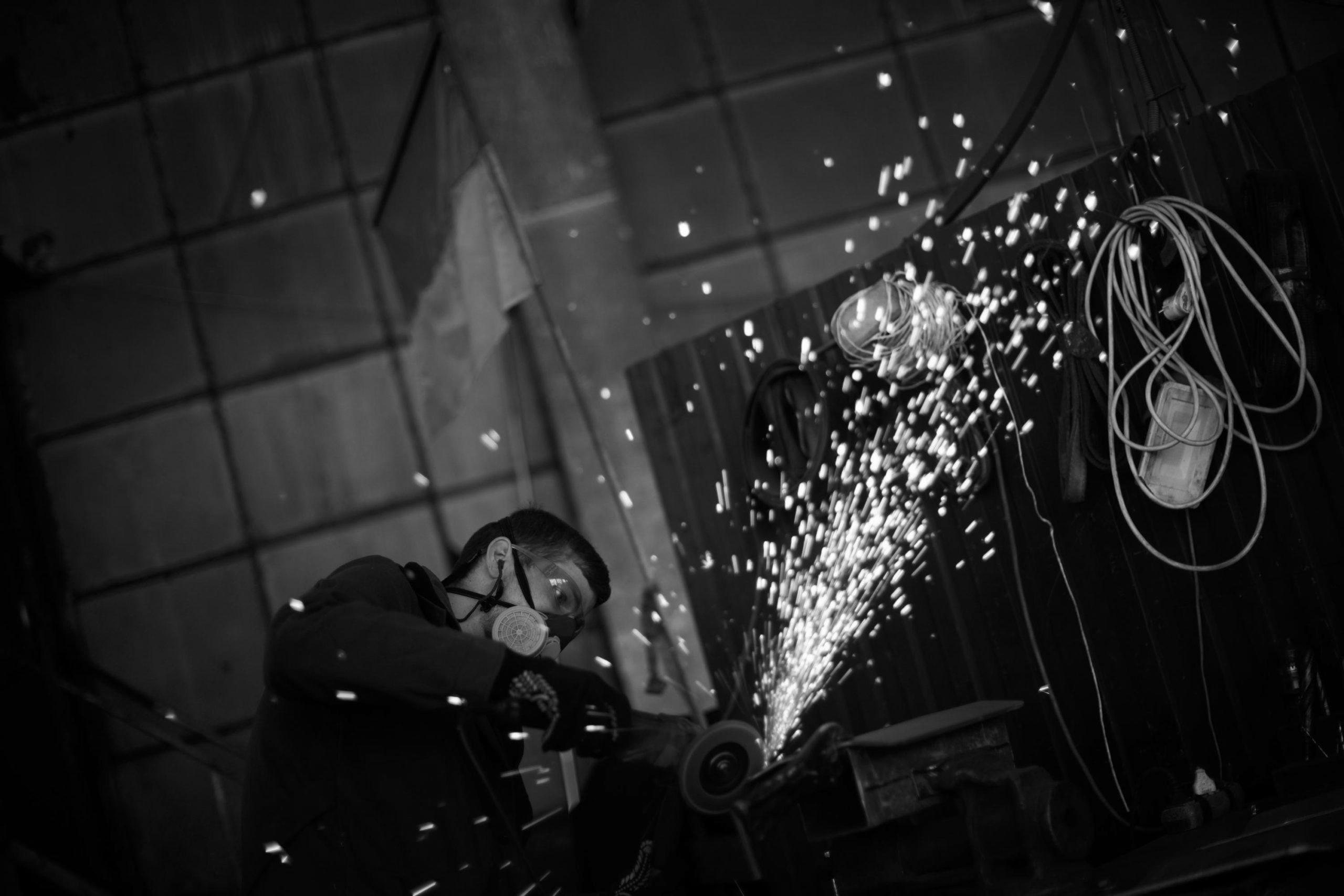Protect the body: Ukraine volunteers craft armor, camouflage
Warning: Undefined variable $post_id in /home/webpages/lima-city/booktips/wordpress_de-2022-03-17-33f52d/wp-content/themes/fast-press/single.php on line 26

2022-05-09 09:16:18
#Protect #body #Ukraine #volunteers #craft #armor #camouflage
ZAPORIZHZHIA, Ukraine (AP) — Sparks fly as a circular saw slices into steel, whereas welders close by work feverishly to the sound of blaring heavy metallic. Upstairs, stitching machines clatter as girls mark patterns on material being shaped into bulletproof vests.
An outdated industrial advanced in the southeastern Ukrainian riverside city of Zaporizhzhia has develop into a hive of activity for volunteers producing all the things from body armor and anti-tank obstacles to camouflage nets, moveable heating stoves and rifle slings for Ukrainian soldiers combating Russia’s invasion. One part focuses on automobiles, armor-plating some, converting others into ambulances. Another organizes food and medical deliveries.
With the entrance line about 50 kilometers (30 miles) from the city, some sections of the operation, such because the stitching of bulletproof vests, are working across the clock in shifts to satisfy demand. Crowdfunding has introduced in sufficient money to purchase metal from Sweden, Finland and Belgium, which is lighter than local steel, organizers say, a crucial quality for body armor.
The operation is the brainchild of local celeb Vasyl Busharov and his pal Hennadii Vovchenko, who ran a furniture-making business. They named it Palianytsia, a kind of Ukrainian bread whose name many Ukrainians say cannot be pronounced correctly by Russians.
The operation relies entirely on volunteers, who now quantity more than 400 and come from all walks of life, from tailors to craftsmen to lawyers. Other than these concerned in production, there are additionally drivers delivering humanitarian support and medical equipment bought by way of donated funds.
“I feel I am needed here,” stated fashion designer Olena Grekova, 52, taking a quick break from marking cloth for vests.
When Russia invaded on Feb. 24, she was in Thailand in search of inspiration for her spring collection. Initially, she stated, she wondered whether or not it was an indication from God that she shouldn’t return. Her husband and two grownup sons urged her to not.
“However I decided that I had to return,” she mentioned.
She had identified Busharov for years. Arriving dwelling on March 3, she gathered her tools the next day and by March 5 was at Palianytsia. She’s been working there day-after-day since, bar one, sometimes even at evening.
Shifting from designing backless ballgowns to creating functional bulletproof vests was “a brand new experience for me,” Grekova said. However she sought suggestions from soldiers for her designs, which have armor plates added. Now she is helping to produce a number of variations, together with a prototype summer season vest.
In another section of the economic complicated, 55-year-old Ihor Prytula was busy making a new camouflage web, winding items of dyed fabric by means of a string frame. A furniture-maker by commerce, he joined Palianytsia initially of the conflict. He had some army experience, he said, so it was easy to get suggestions from soldiers on what they needed.
“We communicate the identical language,” he said.
For Prytula, the battle is personal. His 27-year-old son was killed in late March as he helped evacuate folks from the northern city of Chernihiv.
“The war and demise, it’s dangerous, trust me, I know this,” he mentioned. “It’s bad, it’s tears, it’s sorrow.”
The decision for volunteers went out as quickly as the warfare began. Busharov introduced his challenge on Facebook on Feb. 25. The subsequent day, 50 folks turned up. “Subsequent day 150 individuals, next day 300 individuals. ... And all together, we attempt (to) defend our city.”
They started out making Molovov cocktails in case Russian soldiers superior on Zaporizhzhia. In 10 days, they produced 14,000, he said. Then they turned to producing anti-tank obstacles often known as hedgehogs — three giant metallic beams soldered together at angles — used as a part of the town’s defenses. Soon, Busharov and Vovchenko said, they found one other urgent need: there weren’t enough bulletproof vests for Ukraine’s troopers.
But studying how you can make one thing so specialized wasn’t easy.
“I wasn’t truly linked with the military in any respect,” stated Vovchenko. “It took two days and three sleepless nights to grasp what needs to be performed.”
The staff went by various kinds of steel, making plates and testing them to check bullet penetration. Some didn’t supply enough safety, others were too heavy to be useful. Then they had a breakthrough.
“It seems that metal used for automobile suspension has very good properties for bullet penetration,” Vovchenko mentioned, standing in entrance of four shelves of test plates with varying levels of bullet injury. The one made of car suspension metal showed dozens of bullet marks but none that penetrated.
The vests and every thing else made at Palianytsia are supplied free to soldiers who request them, as long as they will prove they're in the navy. Each plate is numbered and every vest has a label noting it's not on the market.
To date, Palianytsia has produced 1,800 bulletproof vests in two months, Busharov stated, adding there was a waiting list of around 2,000 more from throughout Ukraine.
Vovchenko said they've heard about up to 300 individuals whose lives have been saved by the vests.
Figuring out that's “extremely inspiring and it keeps us going,” he mentioned.
____
Inna Varenytsia in Zaporizhzhia, Ukraine, contributed.
___
Comply with all AP tales on the conflict in Ukraine at https://apnews.com/hub/russia-ukraine
Quelle: apnews.com